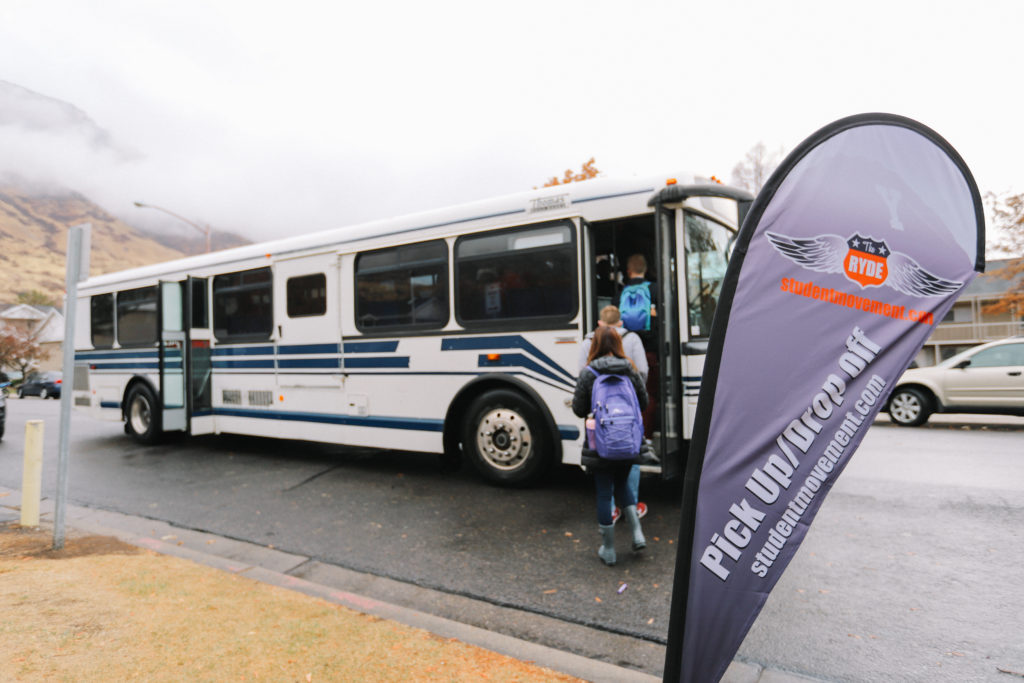
BYU students often squish together on university-contracted shuttles from The Ryde to accommodate the high number of riders trying to get to school.
BYU student Hannah Young takes the shuttle from King Henry nearly every morning and said she has experienced overcrowding.
“I’m personally fine squishing because, I mean, that’s public transit,” she said, adding that the real annoyance is students who refuse to secede personal space to allow more riders onto the bus.
Overcrowding on these campus shuttles, however, is more than just an irritant. Drivers from The Ryde said squeezing too many students onto the moving bus can be a safety hazard.
Too many riders, for example, can block the driver’s vision, especially when those riders are crowded near the front of the bus or in the stairwell. Driver Clark Eliason said the struggle to see around these students contributes to unsafe driving practices.
“We call it rocking and rolling, which is leaning forward so you can see your mirror,” Eliason said.
Unsafe conditions worry The Ryde and its drivers, for whom rider safety is the top concern according to driver Emma Miservy.
“All their lives are in my hands, and I take that very, very seriously,” she said.
Ryde owner Kevin Smith noted that as the number of riders increases every semester, the company is actively seeking out a safe solution to the crowding.
“We constantly look at ways to try and help more riders get to campus,” Smith said. “Safety is our number one priority and concern and always has been and always will be.”
The Ryde has already incorporated various techniques to relieve crowding. The company has posted announcements on the online schedule of when students should expect the shuttles to be near or at capacity. They have also added buses to the routes in highest demand — King Henry and Wyview — during the busy morning and afternoon hours.
One rider, BYU student Brittney Harman, said the extra buses added to routes were always just as packed as the others, showing a demand for the shuttle space. Rider Michelle Castro called for even more shuttles to alleviate the still-crowded space.
“I think it would be a better system if there were more buses in the mornings,” Castro said, adding that sometimes she barely manages to squeeze onto the shuttle.
Another method Smith said has proven effective is to alter bus schedules in increments of “small minutes.” For example, by changing one Branbury shuttle departure time from 14 minutes after the hour to 10, The Ryde could better accommodate students traveling to campus for classes that started on the half-hour. More students could take the 10-after shuttles than the 14-after shuttles, which alleviated the demand at other departure times.
Smith said they have also played with the idea of adding more times by having the shuttles run the same routes more often, but according to driver Miservy, this could put additional strain on the drivers, who need to rest from the mentally exhausting task of operating such a large vehicle.
“That 10-minute break is everything to me,” she said.
Eliason said adding more buses to the routes could be helpful, but the company also has to look at what will be most cost-effective. Additional buses and drivers would take significant funds.
While The Ryde works on implementing more solutions, Smith, Miservy and Eliason said riders can help alleviate crowding by taking an earlier shuttle and listening to and following the bus drivers’ instructions.
“We are very grateful, truly, for all the students that put their trust in us to carry them safely,” Smith said. “We also love hearing the feedback from our riders. It allows us to have more eyes out on the road.”




